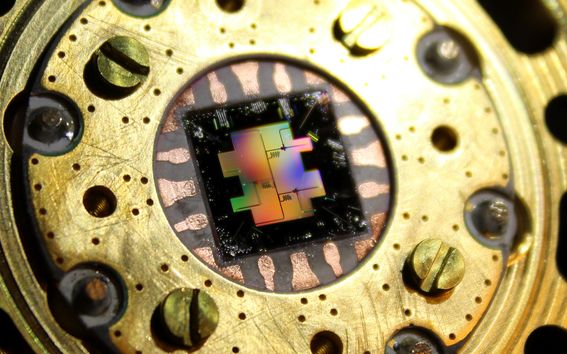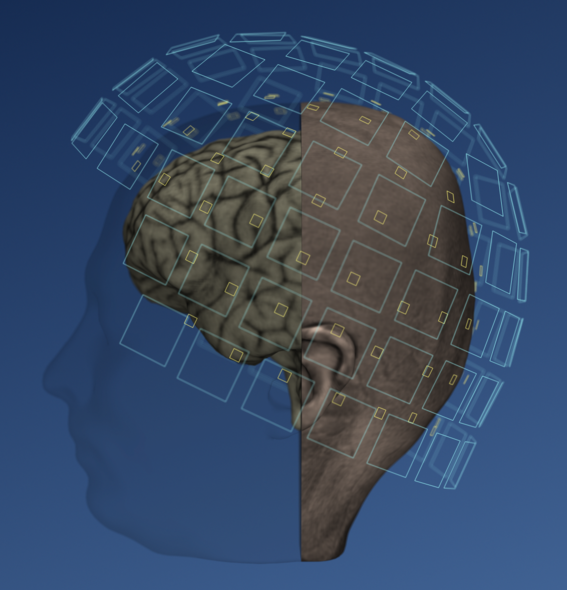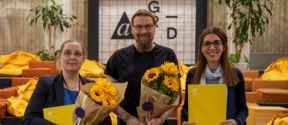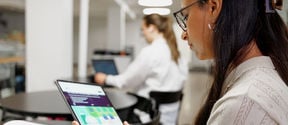Quantum physics and technology research receives billion-euro funding from the EU — Aalto University involved in three projects

Aalto University research groups will study and develop technology for quantum communication, ultra-sensitive magnetic sensors based on quantum optics, and photon-emitting quantum chips. The Quantum Flagship launched by the European Union will provide funding for ten years and for over 5000 researchers with one billion euros. The flagship will consolidate the best quantum physics research in Europe and transfer quantum technology from the lab to the market.
Research and development of quantum technology have seen heavy investment globally during the past decade. Quantum technologies are expected to bring industry-wide disruptions to electronics, information processing and material technology.
Aalto University has a long-rooted history in the fundamental research of low temperature quantum phenomena and devices and technology development. Several research groups from the national centre of excellence Quantum Technology Finland (QTF), which is coordinated by Aalto University, are involved in projects in the new EU flagship. QTF’s research programme for controlling quantum phenomena in solid state and developing novel technologies is unique in the world.
The flagship subproject called Quantum Microwave Communication and Sensing (QMiCS) will explore the microwave light emitted by superconducting circuits that have been cooled down to near absolute zero. In this state, microwaves exhibit intriguing quantum phenomena such as entanglement and quantum teleportation. Although microwaves are already widely used in everyday electronics and wireless communication, the potential of their quantum-realm properties remain largely untapped in commercial technologies.
The QMiCS group will design a network cable that will put the quantum quirks of microwaves into use: to enable data transfer in a local network of quantum computers.
Mikko MöttönenWe are aiming to observe fundamental phenomena in quantum communications, such as teleportation of quantum states with microwave photons.
‘‘We are aiming to observe fundamental phenomena in quantum communications, such as teleportation of quantum states with microwave photons. In this framework, we will implement the first local area quantum network. This technology could be further developed into a quantum radar or the quantum internet,’ says Dr. Mikko Möttönen, Principal Investigator in Aalto University for the QMiCS project.
Ultra-sensitive sensors will be developed in the flagship subproject Miniature Atomic Vapor-Cells Quantum Devices for Sensing and Metrology Applications (macQsimal). The project group will fashion sensors that will outperform existing technologies in terms of sensitivity and accuracy in measuring magnetic fields, time, rotation, and electromagnetic radiation.
In Aalto University, Professor Lauri Parkkonen and his group will conduct the research. They will design and apply magnetic field sensors to perform magnetoencephalography (MEG), which captures the tiny magnetic fields caused by brain activity. The group will construct a MEG sensor array that can adapt to the shape and size of a subject’s head, unlike the current MEG devices that employ sensors based on superconductivity. Using these new sensors, detecting and differentiating between active brain regions will be taken to a new realm of precision—and benefit both further fundamental research and clinical applications, such as pinpointing epileptic foci in the cortex before epilepsy surgery.

‘Current MEG devices that use superconducting sensors are expensive and bulky because the sensors require extremely low temperatures to function. The sensors we are developing are small, work in room temperature and can be placed right on the scalp. The spatial resolution we can achieve with our sensors likely approaches that of invasive measurements. This means that our technology could save epileptic patients the need of surgically implanted electrodes before the actual operation,’ says Lauri Parkkonen.
The third Aalto University-affiliated project, Scalable Two-Dimensional Quantum Integrated Photonics (S2QUIP), will develop quantum photonic hybrid microsystems for wide use in many everyday applications, for example in telecommunications. The project aims to make quantum light sources more efficient, scalable, and exhibit high functionality.
Zhipei SunThe future prospects for this technology are wide-reaching.
‘The future prospects for this technology are wide-reaching: they can be used not only in communication, but also in quantum simulation, metrology and sensing,’ says Professor Zhipei Sun, Aalto University’s Principal Investigator in the project.
QMiCS and S2QUIP are affiliated with Quantum Technology Finland. Two other projects with QTF PIs from the Technical Research Centre Finland VTT will also take part in the Quantum Flagship. QTF utilises the facilities of the national research infrastructure OtaNano.
QMiCS is coordinated by the Walther-Meißner-Institute of the Bavarian Academy of Sciences and Humanities, macQsimal by the Swiss Center for Electronics and Microtechnology, and S2QUIP by KTH Royal Institute of Technology.
European Commission press release: Quantum Technologies Flagship kicks off with first 20 projects
More information:
Mikko Möttönen, Senior Scientist
Aalto University, Department of Applied Physics
[email protected]
tel. +358 50 594 0950
Lauri Parkkonen, Professor
Aalto University, Department of Neuroscience and Biomedical Engineering
[email protected]
tel. +358 40 5089 712
Zhipei Sun, Professor
Aalto University, Department of Electronics and Nanoengineering
[email protected]
tel. +358 50 430 2820
- Published:
- Updated:
Read more news

Aalto Open Science Award ceremony brought together Aaltonians to discuss open science
Last week we gathered at A Grid to celebrate the awardees of the Aalto Open Science Award 2023 and discuss open science matters with the Aalto community.
Seed funding available to boost collaboration between Aalto, KU Leuven and University of Helsinki
Aalto University, KU Leuven and the University of Helsinki launch the 2nd exploratory seed funding call to explore research collaboration possibilities. The funding call is open until 10 September 2024.
Aalto EE Introduces Alex: A New Learning Experience Platform to Transform Lifewide Learning and Tackle Upskilling Challenges
Aalto University Executive Education (Aalto EE) is launching the first version of Alex in June, a learning platform designed to enhance continuous professional development. Alex offers personalized learning journeys, micro-credentials, and professional development programs, aligning current skills with industry needs. This platform, which continuously evolves with new features like mobile access and AI integration, sets a new standard for professional development in Finland.